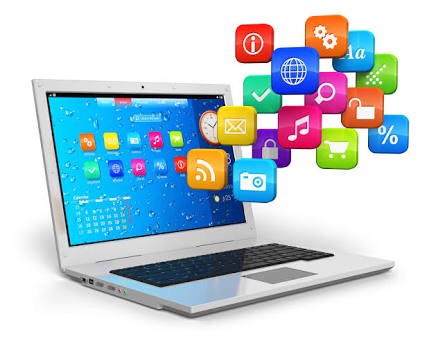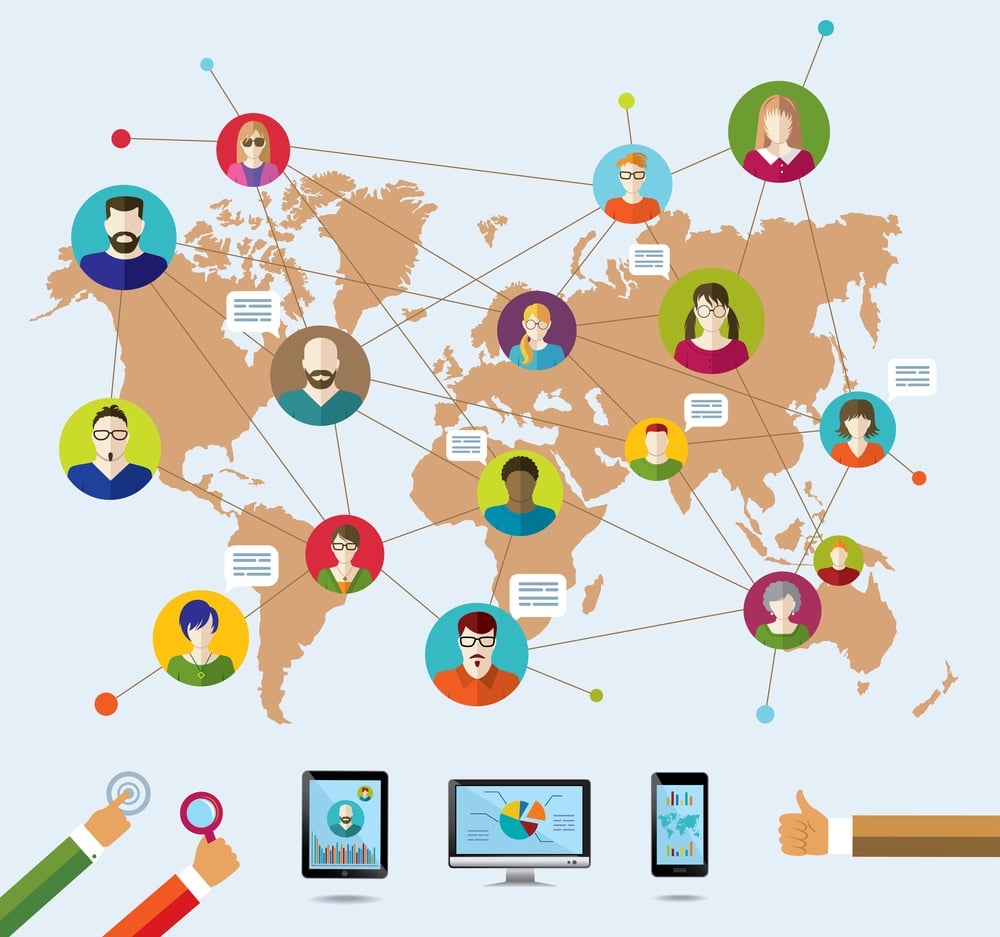ICT (Information and Communications Technology – or technologies) is an umbrella term that includes any communication device or application, encompassing: radio, television, cellular phones, computer and network hardware and software, satellite systems and so on, as well as the various services and applications associated with them, such as videoconferencing and distance learning.

ICT’s are often spoken of in a particular context such as ICT’s in;
education health care libraries.


ICT a medium for ADVOCACY the act or process of supporting a cause or proposal the act or process of advocating something
“Advocacy in democracy is about getting what you want out of the government. In a democracy, which is a collection of voices, it is everyone’s job to use their voice to remind the government about what people want,” – Matthew Kaplan ICT
Our society is constantly developing, ICT had a huge impact in our community and in this generation.
From schools, offices, government agencies and non profit organizations. ICT or known as Information and Communication Technology, gave a prominent impact in our society and it drastically changes our activity shift. Due to ICT options are more evident and transparent, there are more selections and more ideas our society can conjure.
These are experiences that occur all over the world, because of ICT they have more possibilities and more field experiences.
1.SMS or Short Message Service in the Philippines
In the tech world, Philippines is known as “The Texting Capital of the World”, Filipinos send text messages around 1.39 as stated by a survey done by the Philippine Mission Organization. Roughly 80% of the Filipinos have mobile service subscriptions.
2. The modernization through computer and Internet in Cape Verde, Africa
The computer and Internet is the driving force of ICT in modernizing the public sectors process. The program Reforma da Administração Financeira do Estado (RAFE) services and training increase the economy and gave the citizens opportunities and are very fortunate to have occupations in order to provide their families.
3.Local e-governance in India
State-level Informatics System for Strengthening the Decentralized Plan Implementation (SLIDE), government decision-makers throughout India realized the important role that ICTs would play in modern governance. SLIDE project employed a variety of ICTs to help local institutions mitigate the transition to a decentralized governing system that is unique to the State
4. Regulatory reform and universal access in Brazil
ANATEL (Agência Nacional de Telecomunicações), has employed a variety of mechanisms to equip Brazilians with access to useful information to help improve their socio-economic status. Not only does the regulator provide visitors to its website with a chart of the cheapest telecommunication service rates, which are provided by each network operator in the country, but it also engages the public in formulating national telecommunication sector policies.
5. Modernizing Malaysia’s Government
The Malaysian Administrative Modernization and Management Planning Unit (MAMPU) seeks to enhance the use of ICTs and has mandated that each government agency create an information technology (IT) strategic plan to help facilitate greater communication between agencies and the public. This includes the Smart Partnership Application Repository (RAPP), the Government Integrated Telecommunication Network (GITN) and a virtual private network (VPN).
——–This post was originally published on cataloguebox.wordpress.com
ONLINE PLATFORMS


Online platforms have revolutionised access to information and have played a positive role in vitalising markets by better connecting buyers and sellers of services and goods. Yet, some concerns have been raised about:
- how online platforms collect and make use of users’ data,
- the fairness in Business 2 Business (B2B) relations between online platforms and their suppliers,
- consumer protection, and
- the role of online platforms in tackling illegal content online
The Role of ICT in Recent History
Throughout recent history, the Philippines have been one of a few nations that demonstrate unity for a call to action or social change. These campaigns for social change would have not been successful if it were not for ICT.
- EDSA (PEOPLE POWER REVOLUTION). The people power revolution lasted from 1083 to 1986. During a radio broadcast of Radio Veritas, Cardinal Sin encouraged the Filipinos to help end the regime of then President Ferdinand Marcos. A major protest took place along the EDSA from February 22 to 25, 1986 involving two million Filipinos from different sectors. These included civilians, political parties, the military and religious groups.
- EDSA DOS. This is also known as the 2001 EDSA Revolution, happened during January 17 to 21, 2001. It was fueled after 11 prosecutors of the President Joseph Estrada walked out of the impeachment trial. As a result, the crowd in EDSA grew over the course of a few days through text brigades.
- Million People March. This is a series pf protest that mainly took place in Luneta Park from august 22 to 26, 2013. There were also several demonstrations that happened around key cities in the Philippines and some location overseas. The organizers and promoters of the Million People March used Facebook and Change.org as their, mediums.
- Yolanda People Finder. Recent storms in Philippines history gave birth to the People finder database powered by Google. During typhoon Yolanda, the people finder was a vital tool for people across the globe to track the situation of their relatives. This proved to be successful and is now adapted by more organizations to help people track relatives during calamities.
CLOUD COMPUTING


1. There are two versions of cloud to know about
There are several varieties of cloud computing services. Depending on your company’s IT needs, you might be able to use a cloud service instead of investing in new IT hardware. Two of the more popular versions of cloud offerings are Software-as-a-Service (SaaS) and Infrastructure-as-a-Service (IaaS). With SaaS, the cloud service provider hosts your enterprise applications and associated data on its servers and storage systems. Users gain access to SaaS applications using a Web browser. And your company would typically pay a fee per user per month. With IaaS, the provider offers virtual machines, physical servers, storage, switching, and connectivity resources to run your enterprise applications on a pay-as-you-go basis. You are responsible for installing and maintaining the operating system and application or virtual machine; the provider is responsible for managing the infrastructure hardware that the applications or virtual machines run on.
2. Cloud Computing Services offer greater flexibility in delivering IT services
Business today is very dynamic. Cloud services let companies quickly ramp capacity up AND down to match business needs.
In contrast to legacy hosting services, which often locked companies into contracts for multiple months or years, today’s cloud computing services are offered by the month or based on the consumption of resources. This is a perfect match for some industries, such as retail and financial services, which are subject to boom times and quiet times in their normal business cycles. Maybe you have a new application and are unsure of the speed of growth. A cloud computing service lets you expand and contract IT resources in sync with those cycles.
Need more capacity to handle late summer back to school sales or to support a web site for a trendy service? You can throttle up capacity for several months to support the peak period and then scale back when activities return to normal. Similarly, you can match capacity to demands as business units grow and contract over time. This helps align IT spending with actual needs.
3. Cloud computing gives you the ability to refresh an aging infrastructure without incurring CAPEX costs.
This is critical especially for companies that are trying to accommodate new technologies. For instance, many companies today are virtualizing their mission-critical applications. To do so, they need the virtual machines associated with those applications to run on powerful and resilient servers. Cloud computing gives companies a way to do this without having to buy new servers.
4. Cloud is an economical way to support more users and new IT services.
Many data centers are running out of space. This is forcing some companies to build new data centers or pay a fortune to expand their existing centers. Here again, cloud computing allows companies to move their applications to a provider’s infrastructure and save the cost of a data center expansion.
5. Cloud frees up staff for other projects.
IT staff members spend most of their time keeping the proverbial “lights on.” A good portion of an IT staff’s time is dedicated to managing, maintaining, and troubleshooting equipment. Cloud computing providers often offer infrastructure as well as management services, allowing companies to offload those tasks to the provider, thus freeing up IT staff to work on other projects that are more critical to the success of a business.
As you can see, cloud computing can be many things to different companies. The great thing about cloud computing is that the services can help companies be more responsive to market conditions, all while reining in IT costs.
——–This post was originally published on Forbes and Sungard Availability Services.
